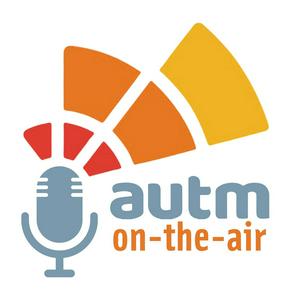The blue economy is rapidly evolving. There’s a growing demand for innovation that’s both sustainable and scalable. Leading this work is Millicent Pitts, CEO and Executive Director of Ocean Exchange. Over the last ten years, she has helped the organization identify and support cutting-edge solutions that protect ocean health and strengthen coastal systems.Millicent spent three decades in the chemical and materials industry, holding senior roles at BASF, Engelhard, Arco Chemical, and more. She also earned her MBA from the Wharton School at the University of Pennsylvania. This background gives her a practical, business-minded approach to sustainability. She also serves as a mentor and judge for cleantech and ocean innovation competitions, including Creative Destruction Lab and NOAA’s Blue Economy Subcommittee.Ocean Exchange is a catalyst for turning research into real-world impact. Through its $100,000 Neptune Awards and collegiate grants, the organization has supported over 170 finalists who have collectively raised more than $3.2 billion in funding. Millicent discusses how these non-dilutive awards and mentorship programs help innovators move from idea to execution. We also discuss why Tech Transfer professionals play an important role in identifying talent and technologies that are suited for the blue economy.As one of just four national partners in NOAA’s Ocean Enterprise Accelerator, Ocean Exchange is expanding its reach through a well-funded initiative focused on ocean data, environmental resilience, and commercialization support. Today, we’ll highlight practical ways TTOs can engage, from encouraging student and faculty applications to joining review teams or helping innovators explore ocean use cases.In This Episode:[02:15] Millicent spent three decades in the chemical and materials industry. She benefited from working for companies that took environmental responsibility seriously.[03:22] Ocean Exchange has been around for 14 years and has a global reach. Their mission has always been to help advance the adoption of innovative solutions for healthy oceans and resilient coastal systems.[04:17] They moved from Savannah, Georgia to South Florida. South Florida is ground zero for many of these ocean and coastal system topics.[05:32] One of the things when she joined the organization was to make it more marketing and business friendly. [06:34] The more modern way of thinking of the blue economy embodies the idea that humans can use and interact with the ocean and not harm it.[07:22] In their 13 years of granting, they've had about 170 finalists who have raised 3.2 billion dollars. Most of it was in seed rounds and venture capital.[10:00] Ocean Exchange had a vision to find innovators and help their work have investment and societal impact.[13:17] Lives will be uplifted wherever these innovations are implemented.[14:04] How the ecosystem supports award applicants and winners beyond funding. A wide array of industry experts review the applications on impact, level of innovation, and ability to execute. This is part of their best network.[21:18] The $100,000 Neptune Awards. They take in philanthropy from families and corporations. After the selection process, they end up with 15 finalists. The award goes to any innovation about oceans and coastal systems.[22:55] Non-diluted funds are distributed meaning they don't take equity.[28:35] How tech transfer offices can leverage the collegiate awards which helps them reach undergraduates. Tech Transfer offices help connect the students.[33:13] We discuss applying to one or more of the NOAA accelerators. The National Oceanographic and Atmospheric Association, a part of the Department of Commerce, announced an accelerator program.[35:21] There are seven groups in the continuum that put forth a national model.[36:41] They want to reach more at the university and faculty level that have ocean use case innovations.[40:40] Each group gets a grant of 14 million dollars over 4 years. 40% of that will go through TDC Awards, Technology Development and Commercialization Awards.[41:13] Millicent manages these awards. The Great Lakes are also considered part of the ocean system. Most of the awards are between the range of 10,000 to 200,000 dollars.[42:30] You have to complete one of the accelerator programs also. You need to separately apply for the TDC award and say how you're going to use the money.[43:27] Goals include having at least $400,000 worth of non-dilutive grants.[45:18] She really wants Tech Transfer managers and executives to engage and maybe even be an expert on their review team. [46:14] There are great opportunities in the blue tech space, and they will help you through it.[46:40] Key deadlines: The collegiate grants have a deadline of September. There is still time if you're in the Americas to apply for the $100,000 award. Apply at Oceanexchange.org.Resources: Ocean ExchangeMillicent Pitts - LinkedInCreative Destruction LabNOAA Blue Economy SubcommitteeF6S
[email protected](912) 257-0209


